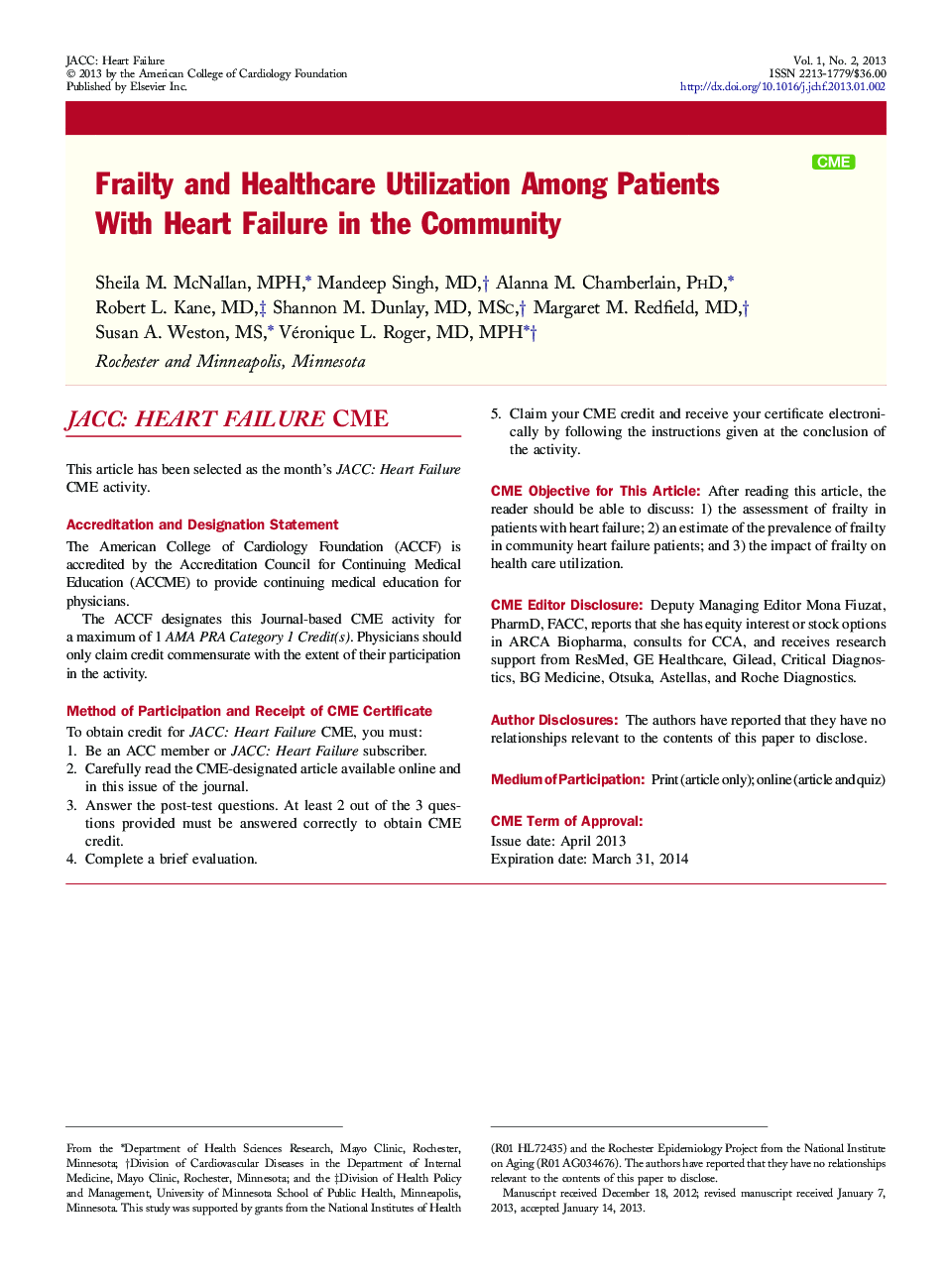| Article ID | Journal | Published Year | Pages | File Type |
|---|---|---|---|---|
| 2942652 | JACC: Heart Failure | 2013 | 7 Pages |
ObjectivesThe aim of this study was to determine the prevalence of frailty in a community cohort of patients with heart failure (HF) and to determine whether frailty is associated with healthcare utilization.BackgroundFrailty is associated with death in patients with HF, but its prevalence and impact on healthcare utilization in patients with HF are poorly characterized.MethodsResidents of Olmsted, Dodge, and Fillmore counties in Minnesota with HF between October 2007 and March 2011 were prospectively recruited to undergo frailty assessment. Frailty was defined as 3 or more of the following: unintentional weight loss, exhaustion, weak grip strength, and slowness and low physical activity measured by the SF-12 physical component score. Intermediate frailty was defined as 1 or 2 components. Negative binomial regression was used to examine the association between outpatient visits and frailty; Andersen-Gill models were used to determine if frailty predicted emergency department (ED) visits or hospitalizations.ResultsAmong 448 patients (mean age 73 ± 13 years, 57% men), 74% had some degree of frailty (19% frail, 55% intermediate frail). Over a mean follow-up period of 2.0 ± 1.1 years, 20,164 outpatient visits, 1,440 ED visits, and 1,057 hospitalizations occurred. After adjustment for potential confounders, frailty was associated with a 92% increased risk for ED visits and a 65% increased risk for hospitalizations. The population-attributable risk associated with any degree of frailty was 35% for ED visits and 19% for hospitalizations.ConclusionsFrailty is common among community patients with HF and is a strong and independent predictor of ED visits and hospitalizations. Because frailty is potentially modifiable, it should be incorporated in the clinical evaluation of patients with HF.
